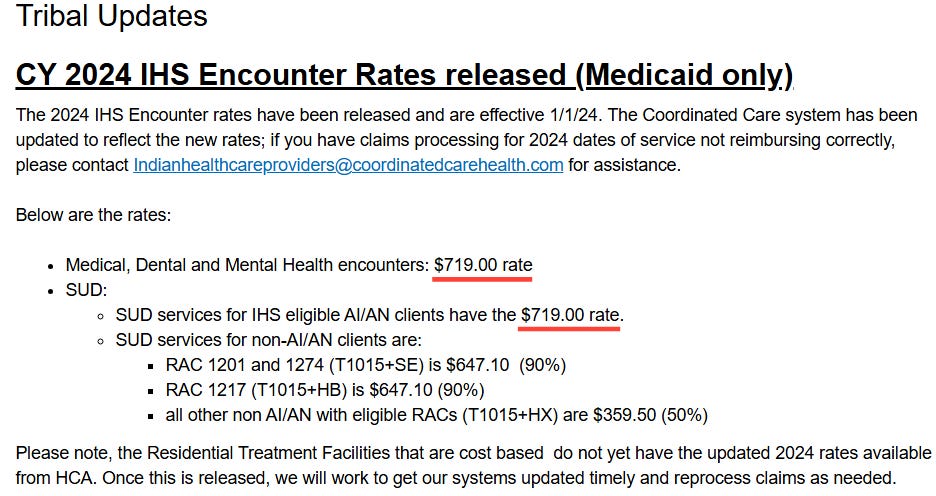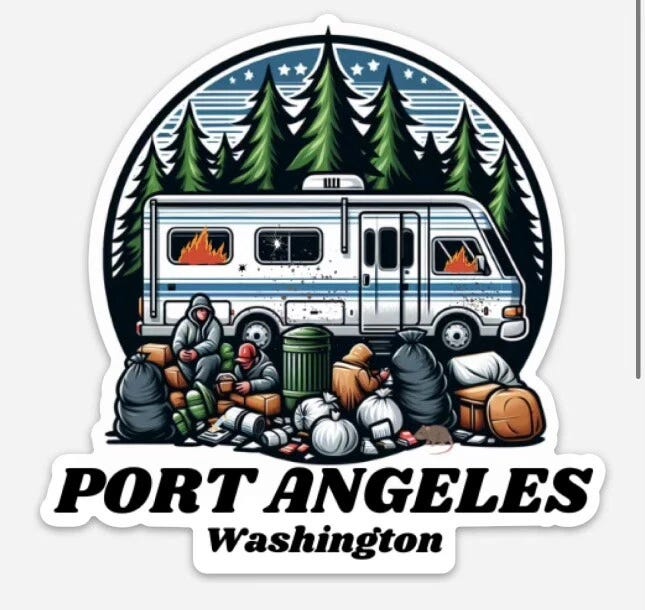Commissioner Mark Ozias says harm reduction is saving lives — but is it quietly fueling a system that keeps people addicted while enriching politically connected treatment clinics? It’s time for a hard look at the financial incentives, political ties, and unanswered questions behind Clallam’s opioid strategy — is the real path to recovery being sidelined for profit?
Clallam County Commissioner Mark Ozias recently used his privileged media access in the Sequim Gazette to tout the success of the county’s harm reduction strategy, claiming a 33% reduction in overdose deaths and a rise in visits to the new Harm Reduction Health Center as proof that the approach is working.

But the story he tells is only half the truth — and the part he leaves out is not just incomplete, it’s dangerous. Harm reduction is not a treatment for addiction. It is a stopgap that, without a defined and well-funded pipeline to recovery, risks trapping people in safer cycles of drug use that financially benefit treatment providers — including Commissioner Ozias’ largest campaign donor: the Jamestown S’Klallam Tribe.
Harm reduction is not recovery
Commissioner Ozias compares harm reduction to sunscreen or seatbelts. But sunscreen doesn’t stop cancer once it begins — and a needle exchange doesn’t stop addiction. The real solution to opioid use disorder (OUD) is Medication-Assisted Treatment (MAT): medications like Suboxone, methadone, or Vivitrol that block withdrawal, reduce cravings, and enable long-term recovery.
Ozias cites community partners who provide wound care, insurance enrollment, or behavioral support — but there is no data offered on how many people actually move from harm reduction into MAT, let alone into long-term recovery. That’s the metric that matters. Without it, all we’re doing is stabilizing addiction — not treating it.

The MAT Clinic: Public health or profit center?
The Jamestown S’Klallam Tribe operates the region’s major MAT clinic. In 2023, at a People’s Forum Town Hall, their Health Director, Brent Simcosky, was asked why the clinic didn’t offer alternatives like Vivitrol that don’t require daily dosing (Vivitrol is administered monthly). He refused to answer the question, equating other global models to Russia’s brutal tactics: “They take you in the back and shoot you,” he said.
Asked what the Medicaid reimbursement rate was per visit, Simcosky wouldn’t say — but the actual number is public record.
According to the Washington State Health Care Authority, tribal clinics are reimbursed $719 per patient encounter for Medicaid-eligible individuals. That’s not monthly — that’s per visit. A proposed change in state policy would even increase the number of billable encounters to six per day per patient. That means one person could generate over $4,300 in daily reimbursements.

This is not an attack on Tribes or treatment — it's a request for transparency and accountability. Ozias praises the rise in visits to harm reduction centers, but more visits mean more referrals to MAT clinics — which in turn means millions in reimbursements to his top campaign donor.
Follow the money
There is no clearer conflict of interest in Clallam County right now than Commissioner Ozias promoting harm reduction infrastructure that directly fuels a Medicaid-funded revenue stream for the Tribe that is funding his political campaigns.
Harm reduction isn’t just compassion — it’s a pipeline. And unless we demand transparency in outcomes and finances, it’s a pipeline with no off-ramp.
Where is the oversight? Where is the plan to graduate people from daily, lifelong dependency on MAT? Where is the investment in treatment options that don’t come with a daily price tag?

Real help or managed addiction?
Ozias celebrates the "nonjudgmental" nature of the Harm Reduction Health Center — but that cannot become an excuse for enabling permanent addiction. Compassion does not mean complacency. True compassion demands exit strategies, long-term goals, and a system that helps people actually get well.
At present, Clallam County’s harm reduction strategy does the opposite: it feeds people into a highly profitable treatment cycle with no clear endpoint, and those profiting are the ones writing the campaign checks.

Lives over loyalty
If we truly care about saving lives, restoring families, and building community — as Ozias claims — we must prioritize outcomes, not optics.
That means asking hard questions:
How many clients at the Harm Reduction Health Center have entered MAT?
How many are still using drugs, but now doing so “safely” — indefinitely?
What percentage of MAT clients are still dependent after a year?
What is the total public reimbursement paid to the Tribe’s clinic in the last year?
Why is the commissioner who champions this strategy also the recipient of their political support?
Until we have those answers, Commissioner Ozias’ glowing self-assessment should be viewed not as a community success story — but as a carefully marketed distraction from a system that rewards managed addiction over real recovery.
Last Sunday, in the wake of infighting and continuing dysfunction, readers were asked if Clallam County should abolish the Charter Review process and return to state governance like most other counties. Of 174 votes:
79% said, “Yes”
11% said, “No”
10% were Undecided
Most popular CC Watchdog comment ever
Yesterday my family and I decided we were going to go for a bike ride along the Olympic Discovery Trail. We wanted to ride from Hollywood beach towards Sequim.
I saw more homeless drug addicts out and about in PA than I had ever seen in my 15 years of living in Sequim. It was absolutely stunning!
We stopped at Swain’s along the way and on N. Albert St. I noticed the condemned building on the right side of the intersection.
I think the building was once a Serenity House resource center but I don’t really remember what was once there.
The building is now condemned with gang tags spray painted across the facade. The windows are broken and boarded up. It looks like people are breaking in to live inside and do drugs. There are piles of garbage all over outside.
In one particularly large pile of rubbish was a body of a skeletal man lying in the pile of trash. My 11 year old daughter spotted him and exclaimed that, “There’s a dead guy lying in the garbage mom”.
We drove over to Swain’s and heard that someone had called the Sheriff.
In the Swain’s parking lot was another dude having a psychotic break yelling and mumbling incoherently.
Across the street at the Jessie Webster park there were broken down vehicles/RV’s and an assortment of motley characters who looked like addicts weaving in and out of the trees in the meadow.
We left and drove downtown to Hollywood beach where we saw a dude with a large knife shoved in his belt and another cast of homeless characters dotted across the landscape of the downtown area.
My daughter got scared when she saw the angry, aggressive man with the large knife and we decided that we had seen enough and left.
I left feeling depressed that this is what life has become here.
I don’t have a problem with the homeless. I have a problem with the Homeless Industrial Complex.
Downtown Port Angeles is slowly shaping up to resemble Skid Row in LA.
I’m not really sure how you will attract people to come support all the “cultural art” when you can’t even go downtown without your family being terrified of being stabbed or robbed while in town.






I was a drug tester for many years and serviced many of the tribes in our state. I repeatedly said that these treatment centers were just masking one drug for another. As I talked with tribal members who are going through these treatment centers, I asked if they have been tapering down. Many said no they can’t do that, they can’t live without the drug methadone, etc. The purpose of the treatment center was to get people off of drugs, help them stay off drugs etc. Don’t get me wrong, there was a few that wanted to get off but after 5 yrs or so, they were back into drugs.
These treatment centers need to get people off of all addiction and help them in the mental health area to help them stay off, like AA does with alcohol
The harm reduction plan is just like the homeless plan. It's a giant money laundering scheme. All this money coming on and no accountability.